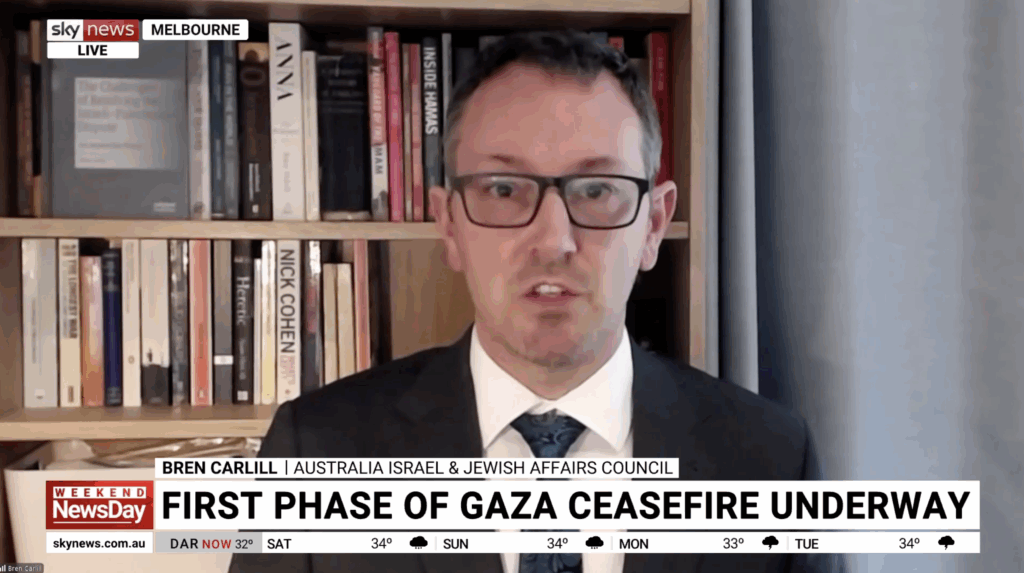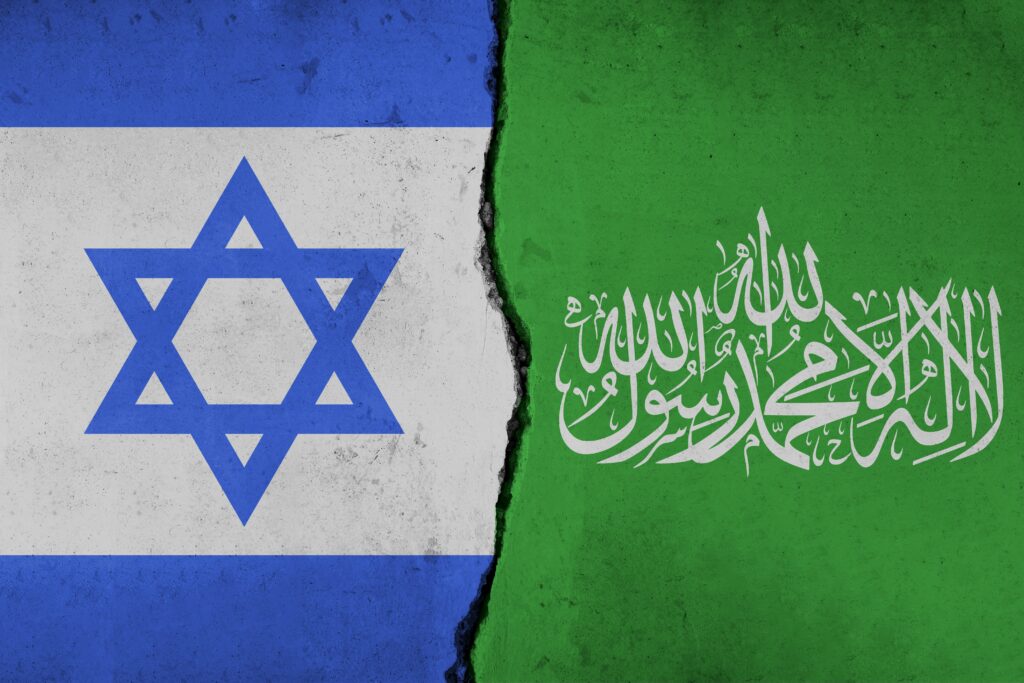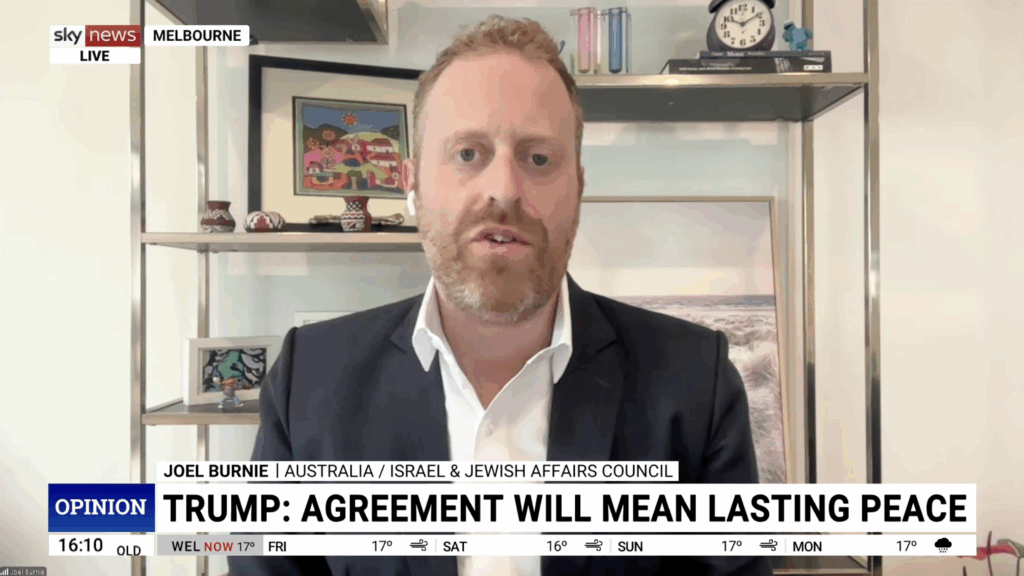FACT SHEETS
Gaza and Israel
June 22, 2020 | AIJAC staff

This fact sheet is current as at June 11, 2020.
SUMMARY
The Gaza Strip is a small enclave bordering Israel and Egypt. In 2005, all Israeli civilians and military forces withdrew from Gaza.
Hamas, a terrorist group, seized control of the area and since 2007, Gaza has been under a blockade by both Israel and Egypt in order to maintain security.
To this day, terrorists continue to fire rockets from Gaza into Israel and there are near-daily attempts by Gazan terrorists to cross into Israel along the heavily fortified border. Israeli authorities permit limited numbers of Gazans to cross the border for medical or work purposes.
THE FACTS
The Gaza Strip is a 362 square kilometre area located between Israel and the Egyptian Sinai Peninsula. Along with the West Bank, it is one of two noncontiguous areas that are internationally referred to as the Palestinian Territories. It has a population estimated at 1.9 million, most of whom are registered as refugees by the United Nations Relief and Works Agency (UNRWA) and rely entirely on that organisation for essential services.
Gaza has been under blockade by both Egypt and Israel since 2007, when Hamas – designated by many countries and organisations in whole or in part as a terrorist group for its attacks against Israeli civilians and avowed goal of wiping out the country – seized full control of the area. It currently runs the statelet as a virtual dictatorship, with other militant Palestinian organisations acting within the bounds it imposes.
Despite the blockade, Hamas has refused to renounce violence and continues to focus on developing military capabilities to attack Israel rather than on the welfare of Palestinians under its control. This has led to several wars since 2006 that have devastated Gaza and left it in a constant state of humanitarian and economic crisis.
History
Gaza was part of the territory allocated to a potential Arab State intertwined with Israel as part of the United Nations Partition Plan for Palestine. The Arab states rejected the plan and attacked Israel once Israel declared independence in 1948, and although they failed to destroy the nascent Jewish state, they did occupy areas allocated to the Arabs in Palestine, with Egypt administering the Gaza Strip.
Ultimately, Egypt administered the territory until the 1967 Six-Day War, when Israel occupied the territory and, after the Arab League refused Israel’s offer to exchange land captured in the war for peace, began constructing settlements.
In the 1990s, the Palestinian Authority took administrative control over Gaza under the Oslo peace agreements. Then, in 2005, Israel’s then-prime minister Ariel Sharon oversaw the “disengagement” of all Israeli civilians and military forces from Gaza, and up to the present day, there is no Israeli military or civilian presence in the area.
In 2006, Hamas – an organisation that does not recognise Israel’s right to exist – defeated the dominant Fatah party in parliamentary elections for the Palestinian Authority, encompassing both Gaza and the West Bank. This led to the suspension of international and Israeli aid to the now Hamas-led Palestinian Authority until three conditions were met: recognition of Israel’s right to exist, renunciation of the use of violence, and acceptance of previously negotiated settlements between Israel and the Palestinians. These conditions have not been met. As noted, Hamas seized total control over the Gaza territory in June 2007, effectively severing Gaza from the PA-controlled West Bank.
Human Rights NGOs and international governments have reported that since taking control in Gaza, Hamas has restricted free speech and freedom of the press, oppresses women, spreads incitement via official media outlets, and has a security apparatus that violently cracks down on those who oppose its authority.
The Australian Government lists Hamas’ Izz al-Din al-Qassam Brigades as a banned terrorist group. The Australian Government notes that “the Brigades undertake military activity on behalf of Hamas, and seek to establish a Palestinian Islamist state comprising Gaza, the West Bank and Israel—destroying Israel as a political entity in the process.”
Operation Cast Lead, Operation Pillar of Defense, Operation Protective Edge and the Great March of Return
The border between Israel and Gaza continues to be a site of military conflict. Israeli forces closely monitor the border and maintains a strict no-mans land between the territories. Terrorists in Gaza regularly fire missiles over the border into Israel, launch incendiary devices that set Israeli farmland and nature reserves alight, construct under-fence tunnels in order to infiltrate Israel and attempt to cut, blow up or break through the border fence with Israel.
According to the Meir Amit Intelligence and Terrorism Information Centre, since 2006, more than 9000 rockets have hit Israel, including more than 2500 in the past two years.
During this time, Israel has defended itself continuously against Gaza-based militants, including three major conflicts: Operation Cast Lead (2008), Pillar of Defence (2012), and Protective Edge (2014). Israeli forces have also destroyed under-fence tunnels to prevent weapons and personnel from entering Israel.
These military flare ups ensure that Gaza often makes international news reports. There were two major flare-ups between Gaza and Israel in 2019. In May, around 600 missiles were fired from Gaza into Israel, killing four Israeli civilians. Another 450 missiles were fired at Israel from Gaza in November 2019 after Israeli forces killed a senior commander of the terrorist group Palestinian Islamic Jihad (PIJ) .
In 2018, Hamas and other militant groups established what they called “the Great March of Return”, regular violent demonstrations at the Gaza-Israel border.
Struggling against Israel’s Iron Dome missile defence system and its tunnel detection technology, Gaza-based militant groups opted against engaging in another full conflict with Israel. Instead, Hamas and its allies co-opted massive weekly protests, or “marches of return” along the Gaza border with Israel to coincide with the 70th anniversary of Israel’s independence. The demonstrations advocated the destruction of Israel under the guise of championing the Palestinian “right of return”, the idea that Palestinian refugees and all their descendants have the right to resettle on sovereign Israeli territory.
While thousands gathered peacefully further from the fence, hundreds attacked and sabotaged the border fence with the explicit intention of infiltrating Israel, and attacking civilian towns nearby. In addition, militant groups have been launching explosive balloons and incendiary kites into Israel to destroy Israeli crops and property. Many Palestinians were shot attacking or running towards the fence, and while there were tragic incidents in which civilians were killed, most casualties were members of militant groups.
Gaza blockade
Israel and Egypt imposed an indefinite security blockade on Gaza in 2007 to pressure Hamas to demilitarise and to try to stop its import of dual-use items and weapons. Of the five crossing points for people or goods in or out of Gaza, only one, the Rafah Crossing, is controlled by Egypt. The others – Erez, Karni, Kerem Shalom and Sufa – are controlled by Israel, as is Gaza’s sea and airspace. Restrictions on the movement of people and goods are in place for security reasons. According to the Israeli authority responsible for the border crossings, Hamas has “systematically attempted to exploit humanitarian assistance designated for civilian residents. Hamas stealing humanitarian materials and taking advantage of aid programs in order to tighten control over the population and expand terrorist infrastructure poses a real and significant threat to Israel’s security”.
Nonetheless, while goods with military uses are blocked, humanitarian goods such as food, fuel and medicine cross the Israeli border into Gaza on a large scale, principally through the Kerem Shalom crossing. According to the IDF’s Coordination of Government Activities in the Territories (COGAT) bureau, on average, 15,000 tonnes of goods enter Gaza from Israel daily.
Since 2012, Israel has also facilitated Qatar sending direct financing to Gaza and Hamas to maintain relative calm, to avoid a full blown humanitarian crisis.
Israel’s naval blockade of Gaza has been challenged by a number of protest flotillas, the most prominent of which was the Gaza Freedom Flotilla from Turkey in 2010; however, a UN report into those events found that Israel’s blockade is legal. Activists onboard the ship, the Mavi Marmara attacked Israeli soldiers, who then fired back in self–defence, leading to the death of 10 violent Turkish activists
The humanitarian situation in Gaza is undoubtedly very difficult. While critics are quick to blame the Israeli and Egyptian blockade, in reality, the situation is exacerbated by Hamas. Hamas has siphoned off goods and funds intended to support Gazans to use for its own purposes. For example, it has been reported that 95% of cement delivered to Gaza for civilian construction of homes and buildings, is commandeered by Hamas to use for military purposes like tunnels and bunkers.





